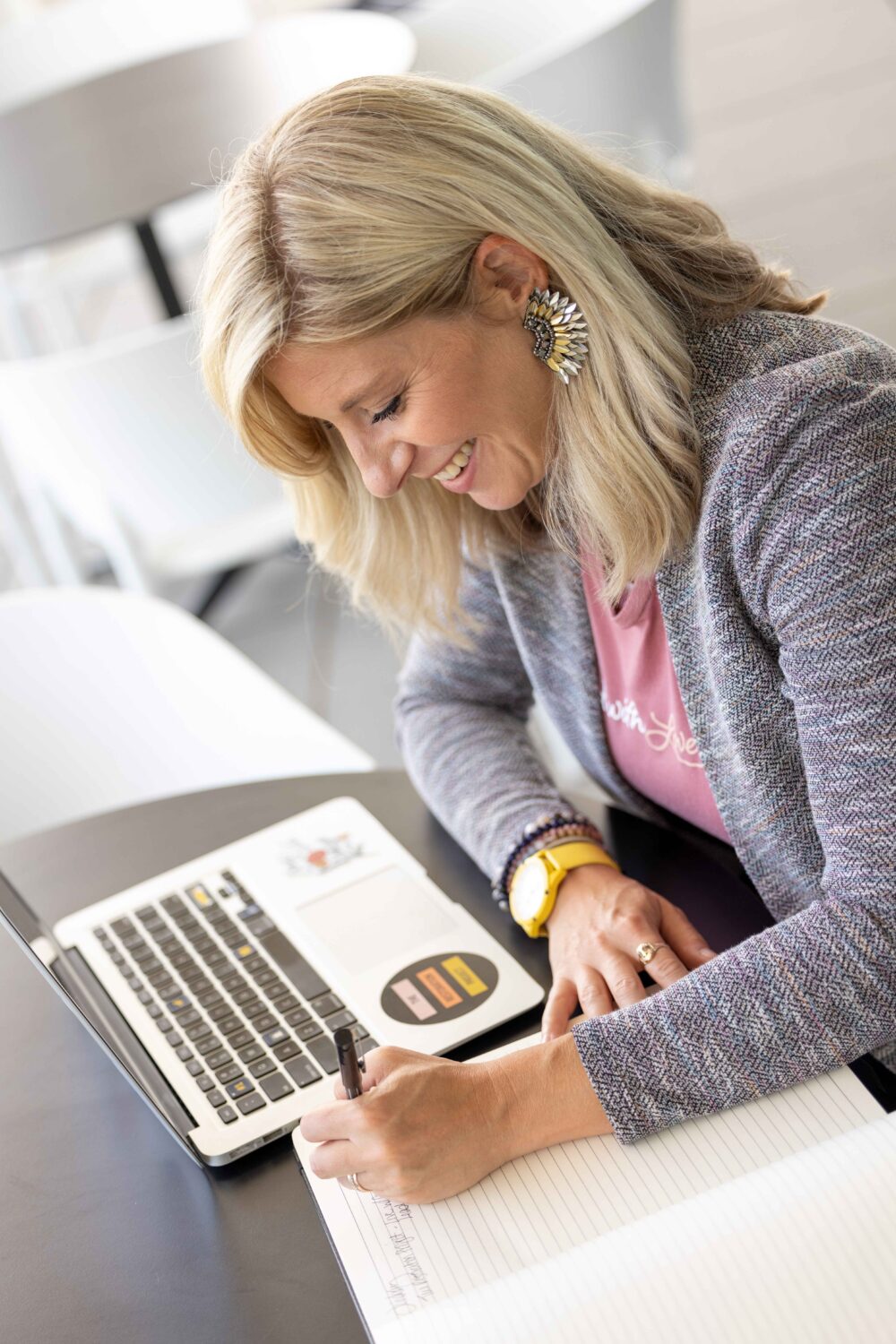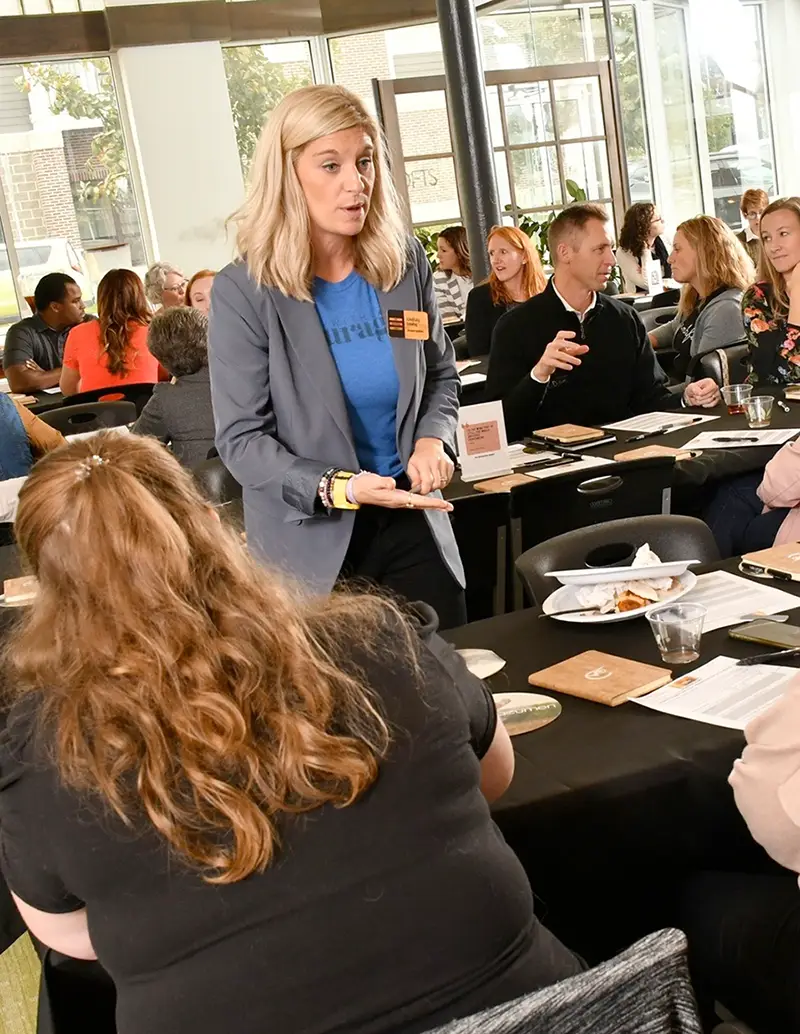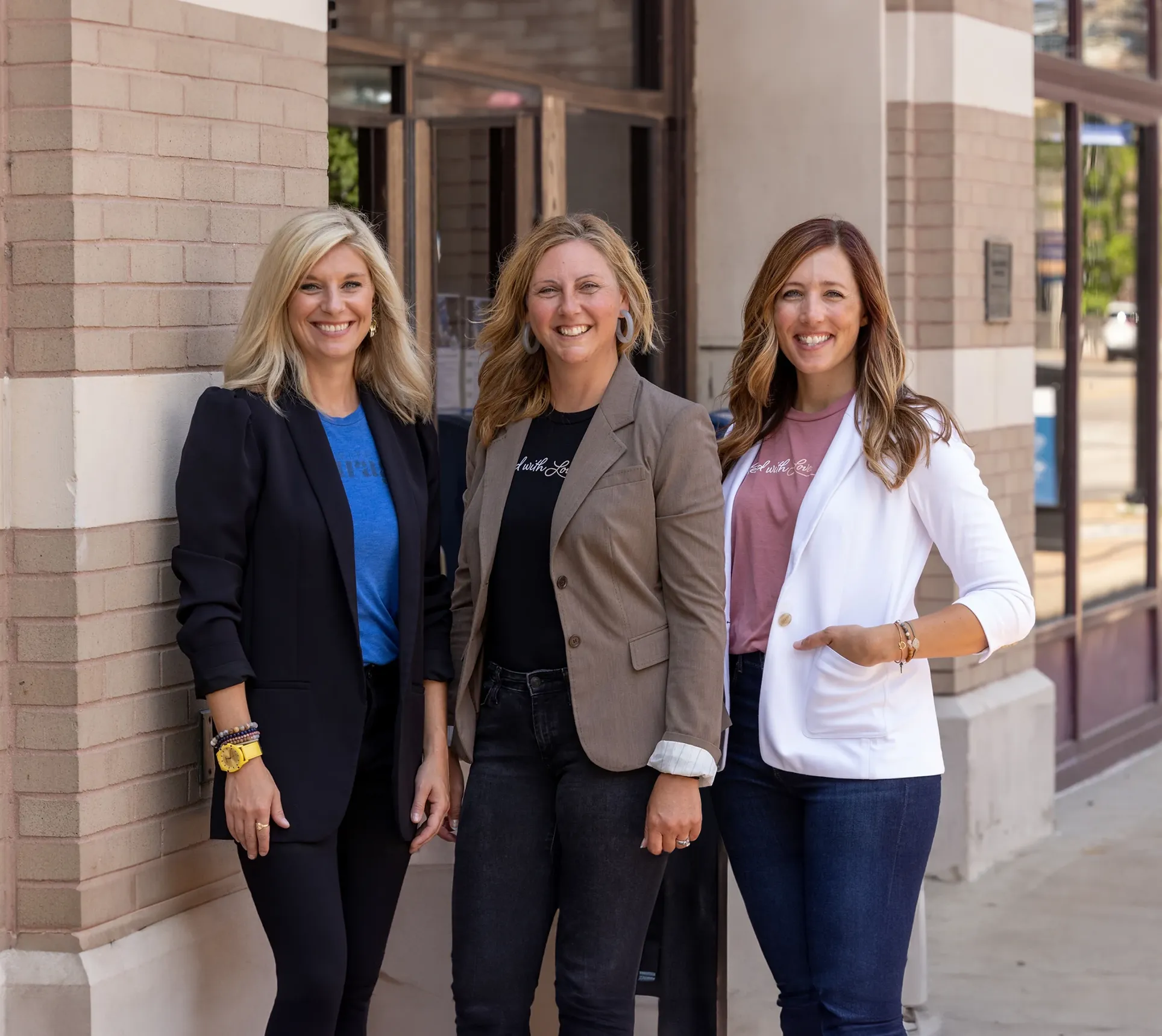
Before we talk about what’s at the core of courageous leadership, let’s ensure we hold the same definition of courageous leadership. In our society, we have traditionally celebrated a certain type of courageous leadership. We’ll call this typical courage. This is signified by behaviors like: force, control, power over others, resistance, shutting out or shutting down our parts of who we are, considering ourselves only, disconnecting and going alone. It is rooted in beliefs like: “I can’t trust anyone.” “I am not safe.” “I have to look out for myself because no one else is.” “I can’t let anyone see the real me.” “What I do doesn’t impact anyone else.” “If I just keep pushing, I’ll be OK.”
We have and continue to celebrate and promote people who “win at all costs” and “have it all together.” We desire people and spaces that are comfortable…that go along to get along and have no “conflict.” We can’t handle people who think differently than we do and get easily offended…and then we distance and cancel.
Typical courage disconnects and divides us. It is transactional. It is hurting others, destroying our planet, and killing our own souls.
Radical courage on the other hand, looks different. It is signified by acceptance, surrender, vulnerability, openness, power to others (from Brene Brown), considering yourself and others, and building connection and community. It is rooted in beliefs like: “Everything I think, say and do impacts everyone and everything.” “I am and will be OK.” “I can’t do this alone.” “I am safe.” “I have hope.” “Relationships are most important and what will matter in the end.”
When we consider only our transactions – the things to be done and the work to complete…the what we need to do…you could see why we choose typical courage. It is faster and easier. I lived and worked in this pattern for a long time. But when we consider the whole of life…what matters most and what will matter in the end…we realize that how we go about doing the what is the most important work.
Radical courage brings us closer together, it helps and serves others, it protects our planet and the most vulnerable among us, it feeds and fulfills our soul, and ultimately is the path to human flourishing.
And it’s not an either/or proposition. Many skeptics of the work we do in leadership and team development believe that if you want effectiveness you can’t have enjoyment, and if you want enjoyment you can’t be effective. THIS IS NOT TRUE! We have proven in our own business model at The Restoration Project, in our personal and community relationships, and with dozens of our clients, that you can be effective and foster enjoyment in the process. But it takes work! So let’s transition to what’s at the core of courageous leadership.
In order to live into radical courage and maximize effectiveness and enjoyment, we must go through these phases which are represented by our mission statement at The Restoration Project: Build Connection, Restore Intention, Inspire Action.
- Connection: To ourselves, others, and something greater
- Intention: Understanding our identity, purpose and dreams + unlearning and releasing our fears and limiting beliefs
- Action: Aligning our intentions, behaviors and impact
Build Connection: This is the first and hardest step, and most of us will never make it beyond this one because it requires radical courage and all those behaviors we don’t like: surrender, vulnerability, acceptance, openness. It forces us to face our fears, limiting beliefs, regrets and more. But it is only in doing this, walking through the darkness or jumping off the cliff (both metaphors explain this process perfectly for me) that we can truly move forward in a more healed and integrated way that is sustainable long term.
This step is initiated by quieting the noise and creating space for solitude and silence.
It requires first, tapping back into who you are, and who you are being in the world which we do by becoming more aware of our thoughts, feelings and actions. When we reconnect with ourselves, our self and social awareness raise and we are able to reconnect with others and the world around us. Ultimately, we can connect to something greater – a higher purpose and calling.
When you can feel safe and remain open in the most challenging situations, and stay connected (even if just in spirit) to the people who bother you the most, then you know you are getting somewhere and are ready to move into the second step of restoring intention. This work of building connection, this deeply meaningful practice, is what we need to focus on to foster courageous leadership for generations to come.
Building connection is at the core of courageous leadership.
It is only from this connected place that we can fully and truly restore our intention in a way that honors ourselves, others and serves the world. And once our intentions are restored, then we can take inspired action that will create positive change.

Written by: Lindsay Leahy, Dream Builder with The Restoration Project


